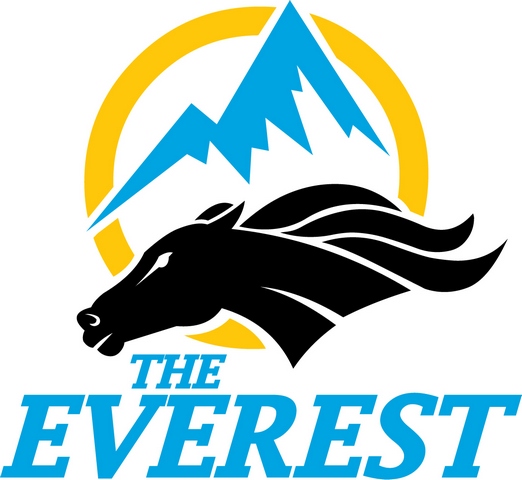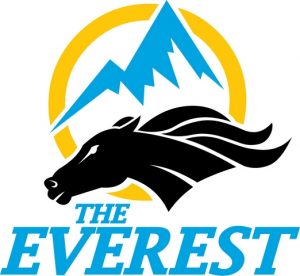
 There seems to have been some confusion, if not a little consternation, around the recently announced but well flagged changes to the Sydney spring carnival built around the $10m The Everest and the role of the Pattern Committee and Racing Australia via them.
There seems to have been some confusion, if not a little consternation, around the recently announced but well flagged changes to the Sydney spring carnival built around the $10m The Everest and the role of the Pattern Committee and Racing Australia via them.
Of course The Everest, a new race and as such, not part of “the Pattern” – or holding any black type status despite its luring prizemoney, will be run for the first time on October 14, which is Caulfield Guineas and Caulfield Stakes day in Melbourne – both Group 1 races. The Thousand Guineas and Toorak Handicap on the same program also carry premium status.
You’d recall the inflammatory taunt of proactive racing NSW CEO Peter V’landys in announcing The Everest concept.
“Look we took no consultation with Racing Victoria because it’s like Kentucky Fried Chicken consulting with McDonalds with a new product. It’s no good telling your competitor what your concept is going to be,” he said.
I’ll leave aside the glaringly obvious (to some at least) notion that racing’s competitor is not from within or across borders but from better packaged, run, promoted and marketed sports, even like ESports.
I’ll leave aside also that McDonalds, which started with nine items on its first menu (including a glass of milk) is now in the booming “wellness” food stakes and has its food is delivered by Uber Eats, to meet a changing marketplace and competition.
Let’s deal with what is on the table and try and make it a little more palatable – or easier to digest.
So to give The Everest race day some meat on the bone so to speak, we know the Winx tempting Craven Plate (a group 3) is shifted 14 days and gets $350,000 extra in prizemoney to $500,000.
This is all ok under the guidelines of the Pattern Committee and requires no such approval.
For example, a change to the date for any Group 1 race requires AusPC approval, a Group 2 has 8 days grace, Group 3 (15) and Listed (29).
In its own guidelines it is easier to understand when the AusPC is required to make a recommendation to the Racing Australian Board to consider.
There are no requirements to prizemoney additions for any black type race.
It is worth noting “Any PRA (Principal Racing Authority) seeking approval for changes must provide written confirmation from any State impacted by this request, within the AusPC application”.
Seems the news is in the mail to Melbourne Racing Club’s chairman Mike Symons, despite the widely tipped winners in the Daily Telegraph.
Symons labelled the aggressive Sydney spring carnival disruption as “eat what you can kill” and that it could have an adverse effect on “the optimal racing calendar”.
“It appears the race switches were done without any consultation with interstate PRAs (principal race clubs) and RA (Racing Australia) board approval, and hence the role, credibility and effectiveness of RA and the Pattern Committee must be seriously questioned,” he said.
Quick background on the AusPC, recently chaired by breeders and then sitting state PRA chairman David Moodie and John Messara.
The AusPC is part of the Asian Racing Federation and governed since 2012 under their “ground rules”
“These Ground Rules emerged from a desire at the international level to harmonise the way in which black type races (Pattern races) are assessed and introduced into, and upgraded and downgraded within the member countries which make up the ARF,” said the AusPC.
“The ultimate aim is to have all countries assess their Pattern races in the same way using similar ratings based processes so that eventually a group 1 race for example in say Ireland will be of a similar standard to a group 1 race run in say Hong Kong, South Africa or Brazil.”
This is now largely a benchmark ratings based system simply equating to a 115, Group 2 (110), group 3 (105) and attached are minimum prizemoney levels.
“Approximately 3.08% of all our TAB races carry black type. That compares favourably with France (3.4%), Germany (6.9%), Great Britain (3%), Ireland (4.7%), New Zealand (4.7%), South Africa (5.1%) and UAE (10.6%).
“Europe conducts about 24,500 races annually of which about 85 are Group 1’s, 96 are Group 2, 208 are Group 3 and 420 are Listed, a total of 815 black type races.
The AusPC guidelines go on to note: “Australia conducts about 19,100 races and has 71 Group 1 races, 88 Group 2 races, 146 Group 3 races and 284 Listed races. Europe as a whole is at 3.3% whilst Australia, with the second biggest racing and breeding industry in the world, is at 3.08%.”
What has this got to do with the spring carnival barney’s we are discussing? Probably not much but is placed as background in a week Hong Kong announced significant prizemoney increases to its feature international races to stay in the game in a busy world top end racing calendar.
 The Queen Elizabeth II Cup (2000m), Champions Mile (1600m) and Chairman’s Sprint Prize (1200m), are all in line for prize money boosts. The 2018 QEII Cup will carry a purse of HK$24 million (about A$3.9m), a rise of HK$4 million, while both the Champions Mile and Chairman’s Sprint Prize will receive HK$2 million increases to HK$18 million(A$2.9m) and HK$16 million (A$2.6m), respectively.
The Queen Elizabeth II Cup (2000m), Champions Mile (1600m) and Chairman’s Sprint Prize (1200m), are all in line for prize money boosts. The 2018 QEII Cup will carry a purse of HK$24 million (about A$3.9m), a rise of HK$4 million, while both the Champions Mile and Chairman’s Sprint Prize will receive HK$2 million increases to HK$18 million(A$2.9m) and HK$16 million (A$2.6m), respectively.
“Under current exchange rates, these increases make Hong Kong the home to the world’s two richest Group 1 races on turf at 2000m, 1600m and 1200m,” said the HKJC release perhaps forgetting the line that The Everest (at $10m) “had the rest of the world talking”.
Racing Victoria cannot be said as having been asleep at the wheel as this was happening around them, but they kept their vehicle well within the speed limits and seemingly very comfortable in their own spring vehicle – as they should be.
You’d note the Caulfield Guineas doubling in prizemoney to $2m while the Caulfield Stakes (Winx or not) goes up $400,000to $1m as a lead in to the $3m Cox Plate though Moonee Valley is upset their weight-for-age championship where Winx will be chasing the Kingston Town trilogy, got left at $3m. And of course the first G1 of the season, the Memsie Stakes at Caulfield offers a $1m carrot in a major profile lift.
But for all the rhetoric, races and their status – come back to their ratings, and these are collated over a 3 year trend.
For example, the Cox Plate was the second highest rated race in the world last year (equal with the Irish Champion Stakes) at 124.75, just 0.5 behind winner Arrogate’s Breeder’s Cup Classic.
Sydney George Ryder Stakes was in the Top 10 with a 122 rating and the highest rated 1600m race in the world. The Hong Kong Sprint (118.75) was the highest rated sprint race though the previous year the T J Smith (which The Everest hopes to mirror in the spring) was the highest rated sprint (119.33).
(It’s interesting to note on The Everest’s Wikipedia page – the race is already labelled a “future group 1 race”.)
In each of the past two years, Australia has achieved 23 races in the top 100, something The Everest hopes to join and establish some internationally recognised black type status off its base inauguration in October.
So we know Chautauqua, She Will Reign, Houtzen, Fell Swoop, English and one of David Hayes Lindsay Park sprinters will line up.
ATC officials will be interested in post-race discussion from Saturday’s July Cup in Newmarket where slot holder Coolmlore’s star Carravaggio heads-off a short priced favourite. The Tin Man (Diamond Jubilee Stakes winner) and Limato (last year’s winner) are key rivals and wish listed Everest climbers.
The race needs an international, and one with credence to give the race and the associated money bag of loot some real skin on the world racing stage, let alone Sydney, as it tries to steal some sunshine in the middle of Melbourne’s world recognized spring carnival.
If 25,000 is regarded as a pass mark for an autumn crowd with all the slick and co-ordinated marketing and promotion, will throwing $10m at what looks on paper right now as just another good sprint you could run most carnival Saturdays achieve?
Put aside the possibility of having Winx run on the same day in the Craven Plate and not the Caulfield Stakes, but clever programming has at least given Sydney racing the opportunity.
But crowd numbers is not a real measure these days it seems. The race concept is thoroughly modern – not new, it copies the premise of slot owners running their own horses or others that the Pegasus World Cup commercially developed.
But it has some work to do. The slot holders contribute $7.2m to the $10m prize pool. The rest is to come from “wagering, sponsorship and other marketing” revenues.
As the VRC is finding out – even in iconic Cup week it’s hard to attract a high profile sponsor. I googled their new Oaks Day partner (Kennedy) and got a jewellery shop on Coffs Harbour first before finding “Kennedy is the world’s finest destination for watches and jewellery with two multi-brand boutiques: The Star Sydney and Crown Melbourne; and three mono-brand boutiques: Rolex Martin Place, Rolex Crown Melbourne and Graff Crown.”
One thing The Everest does do is give racing a chance to create a new market in sponsorship and marketing and experience with clever thinking slot owners open to a blank page of innovative opportunity and create an event that is different and delivers the vision RacingNSW and the Australian Turf Club desire.
And if that is so, despite its ranking or rankling those across the border, it may stop racing just talking to itself but to a vital new audience. And that is not just a good thing but vital.
